Transcribing Voice Memos? Let These AI Tools Help You Better
Frustrated with AI responses falling short? Explore GoInsight to tailor and refine your workflows, boosting your effectiveness and productivity.

Transcribing voice memos is part and parcel of many professionals, whether it's jotting down important meeting notes, transcribing interview audio, or any other use case. But if you've done transcribing, you'll know that it can be quite a hassle doing things manually.
So today, we're checking out some great tools like AI transcription and built-in solutions to streamline the process. This will help you transcribe faster and more accurately to speed things up.
How AI Helps You Transcribe Your Voice Memos
Transcribing voice memos is a staple for many professionals, whether capturing meeting highlights, converting interview audio, or documenting ideas. But anyone who's done manual transcription knows it's a tedious grind: hours of listening, pausing, and replaying to get every word right.
Thankfully, AI transcription tools and built-in features offer a smarter way. Here's how they help:
Faster turnaround: A 60-minute recording that took 3+ hours manually can now be transcribed in under 10 minutes.
Smart features: Most tools include language detection, speaker identification, and noise reduction.
However, AI isn't perfect, but it delivers an 80-90% complete draft, so you can focus on refining, not starting from scratch.
Transcribe Voice Memo with iPhone Built-in Feature
For iPhone, iPad, or Mac users with iOS 18, iOS 18, iPadOS 18, and macOS Sequoia, the built-in Voice Memo app is a no-fuss option. It's preinstalled on every Apple device, so there's zero setup needed.
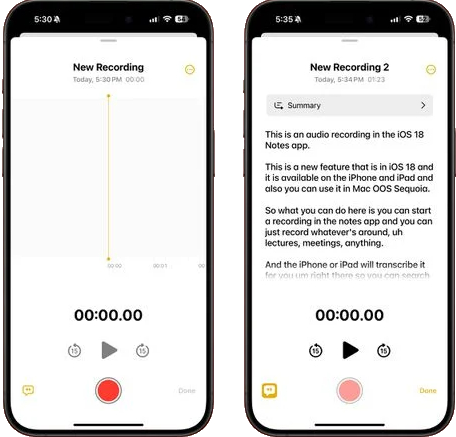
The Best Parts
- Word highlighting: As the audio plays, each word in the transcript lights up—super helpful for syncing text with speech.
- Speed controls: Slow down or speed up the memo to catch tricky parts.
- Useful extras: 'Skip Silence' skips pauses, and 'Enhance Recording' cleans up background noise.
How to Use iPhone Voice Memos Transcribe Feature:
- Open the Voice Memos app on your iPhone, iPad, or Mac.
- Start a recording by pressing the circular red 'Record'
- Complete the audio recording session.
- Once you end the recording, select the recording from the list.
- Tap the three dots '...' in the top-right corner of the playback menu.
- Select 'View Transcript'.
Note: While convenient, mispronunciation or multilingual chats can lead to a loss of accuracy. For example, saying “schedule” as “shed-yule” might lead to a typo.
Transcribe Voice Memo to Text on Android Phone
For Android users, the built-in Voice Recorder app is your go-to. Most Android phones—including Samsung, Google Pixel, and OnePlus—come with a voice recorder preinstalled. If yours doesn't, no sweat: Samsung's Voice Recorder app is free on Google Play and works on any Android device.
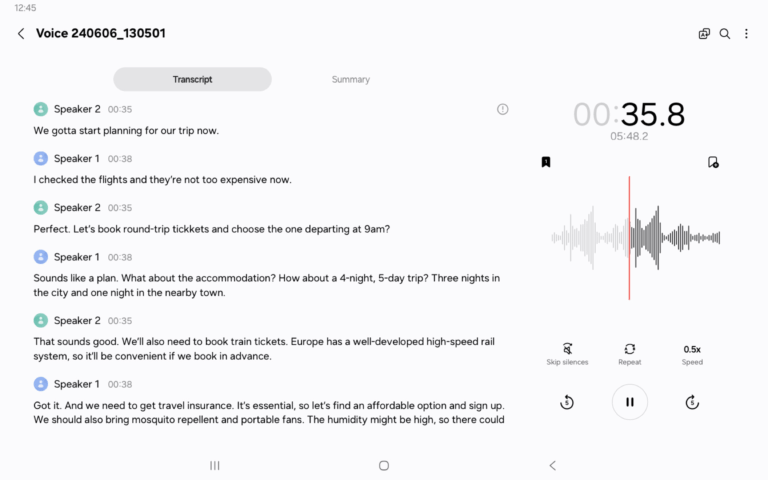
The Best Parts
- Solid transcription skills: The app gets tone and sentence structure right most of the time.
- Two recording modes: Standard (Captures all audio, great for lectures or meetings) and Interview (Uses dual mics to separate your voice from the other person's—perfect for one-on-one chats).
- Edit as you go: Fix typos in the transcript directly from the playback menu, then copy the text to notes or a doc.
How to Use Samsung Voice Recorder App's Transcription Feature:
- Download the Voice Recorder app or open it (Samsung devices).
- Select 'Standard'or 'Interview'
- Tap the red 'Record'button and complete the audio recording.
- Once completed, select the recording and tap 'Transcribe'.
- Select a language if required.
- Samsung's built-in AI will compose the transcript.
Note: Background noise or rapid speech can throw off the transcription. For best results, record in a quiet spot.
5 Effective Third-Party AI-powered Transcription Tools
While built-in transcription features on phones are handy, they do have limits, like accuracy slips with noise, limited language support, and no extra editing tools. If you want more convenience or advanced features, check out these third-party AI-powered transcription tools.
1Google Keep: Best for Quick Note-Taking Transcriber
If you need to transcribe short voice memos for meeting notes or reminders, Google Keep is a solid choice. It's a note-taking app with a built-in voice recorder that captures audio and generates real-time transcripts simultaneously.
- Real-time transcription: Speak into your device, and Google Keep turns your words into text as you talk.
- Syncs everywhere: Access notes and recordings on the web, iPhone, or Android—all with your Google account.
- 100% free: No subscriptions or hidden fees. Just sign in with a Google account.
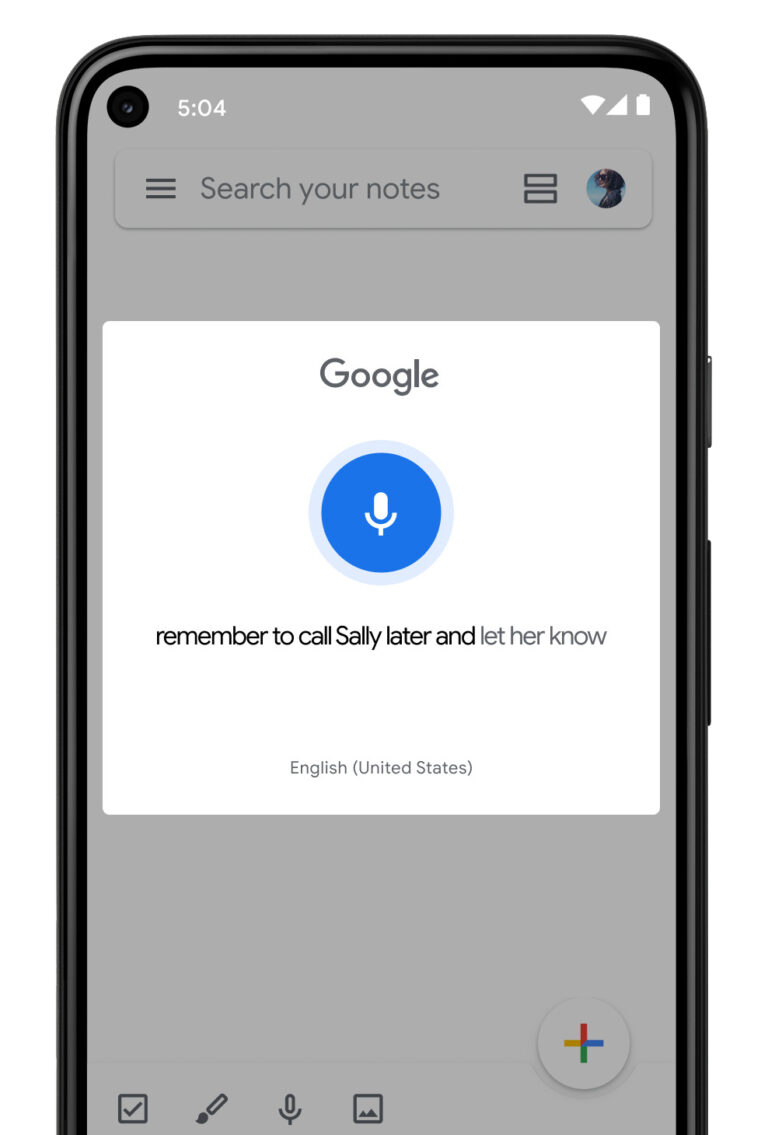
How to Use It
- Open Google Keep and start a new note
- Press the mic button, talk, and the app saves both audio and a transcript at the top.
Note: It's designed for quick notes, so transcription is basic—best for short memos, not lengthy recordings.
2Microsoft OneNote: Best for Integrated Notes and Transcripts
If your workflow runs on the Microsoft ecosystem, OneNote is a powerhouse for merging notes and audio transcription.
- Real-time transcription + note sync: Start recording, and OneNote transcribes in the background while linking your handwritten notes (via the 'Ink' feature) to timestamps.
- Multi-language support: Transcribes speeches in 30+ languages, ideal for global teams.
- External audio uploads: Not just for live recording—import existing MP3/WAV files to transcribe old meetings or interviews.

How to Use It
- Open a new OneNote page and hit the 'Record Audio' button.
- Speak or upload an audio file; the app transcribes text alongside your notes.
- Stop recording to review the timestamped transcript.
Note: Basic note-taking is free, but advanced transcription (real-time audio-to-text) needs a Microsoft 365 subscription. Free users can upload files for transcription, but editing tools are limited.
3Microsoft Teams: Best for Turning Recorded Virtual Meetings into Organized Notes
Many professionals use Microsoft Teams for video calls, but its live transcription feature is a hidden gem. Here's how it turns meetings into organized notes:
- Live transcription & speaker tagging: Records meetings while automatically timestamping each speaker's comments—perfect for meeting minutes.
- Real-time translation: Translates conversations live if you're working with multilingual teams.

How to Use It
- During a Teams meeting, click More actions(three dots) in the toolbar.
- Select Record and transcribefrom the menu.
- The meeting will start recording with live text transcription alongside.
Note: Basic live captions are free, but full transcription and recording require a Microsoft 365 Business subscription.
4Otter.ai: Best for Transcribing Meetings and Conversations
Transcribing meetings across different platforms can be a challenge, but Otter.ai offers a streamlined solution.
- Cross-platform functionality: Works seamlessly with Zoom, Google Meet, and Microsoft Teams, so you can transcribe meetings without switching tools.
- Automated transcription features: The AI bot joins your meeting, timestamps speaker comments, and highlights action items in real time.
- Post-meeting organization: Generates concise summaries of discussions, making it easy to revisit key points and action items later.
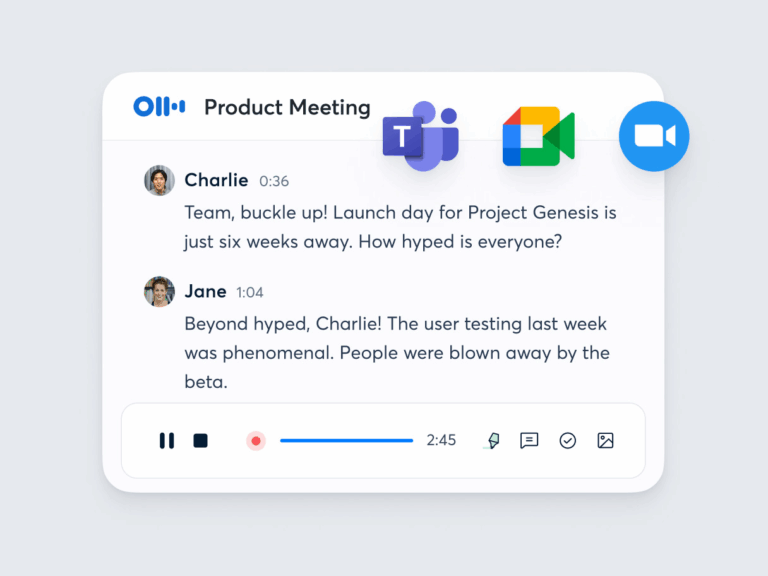
How to Use It
- Search for Otter.ai in Zoom/Teams/Google Meet app stores and install.
- Send the bot's email (e.g., otter@otter.ai) as a participant.
- Once the meeting begins, the bot will auto-record and transcribe live.
Note: Free tier allows 300 monthly minutes (30-min limit per meeting); Pro ($16.99/month) removes limits and adds AI summaries.
5Descript: Best for Editing Audio Like Text
For those who work with audio regularly, Descript provides a unique approach to transcription and editing.
- Text-based audio editing: Upload an audio file, and Descript auto-transcribes it. Editing the transcript directly modifies the audio, simplifying the editing process.
- Versatile AI capabilities: Supports multi-language transcription, text-to-speech conversion, and other features to enhance your audio projects.
- User-friendly interface: Designed for both beginners and pros, Descript makes it easy to edit audio files without complex technical knowledge.
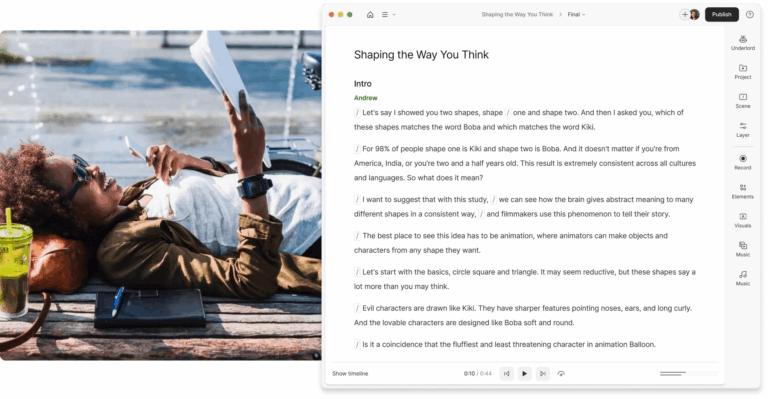
How to Use It
- Upload an MP3/WAV file to Descript.
- The app auto-transcribes text alongside the audio timeline.
- Edit the transcript to cut, merge, or refine audio segments.
Note: Free tier offers 10 hours/month; Pro starts at $16/month for unlimited projects.
Conclusion
Whether you use your phone's built-in feature, Google Keep for quick notes, or Otter.ai for meetings, the right tool can cut transcription time drastically. Most offer free tiers, so give them a shot and find what works for you!






Leave a Reply.